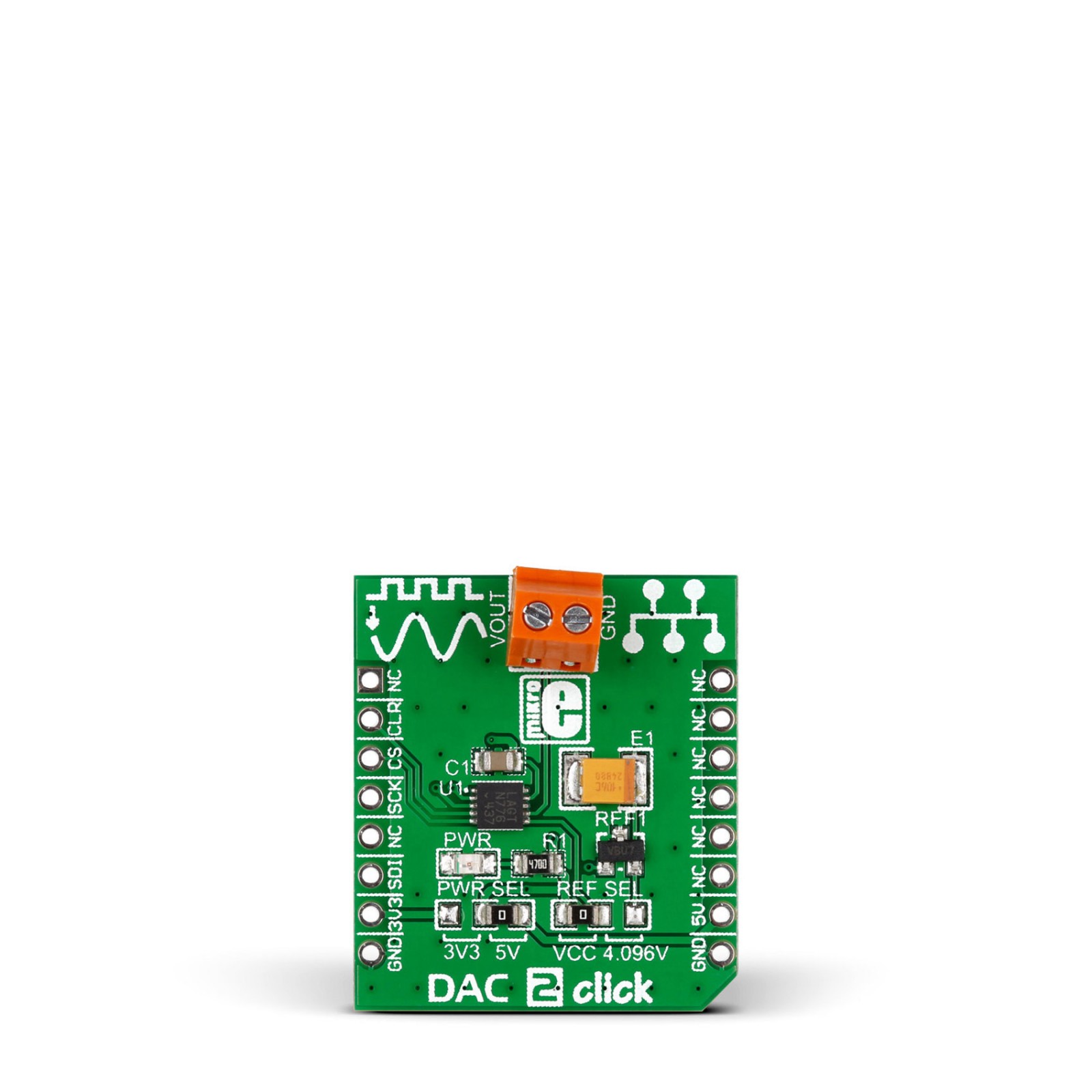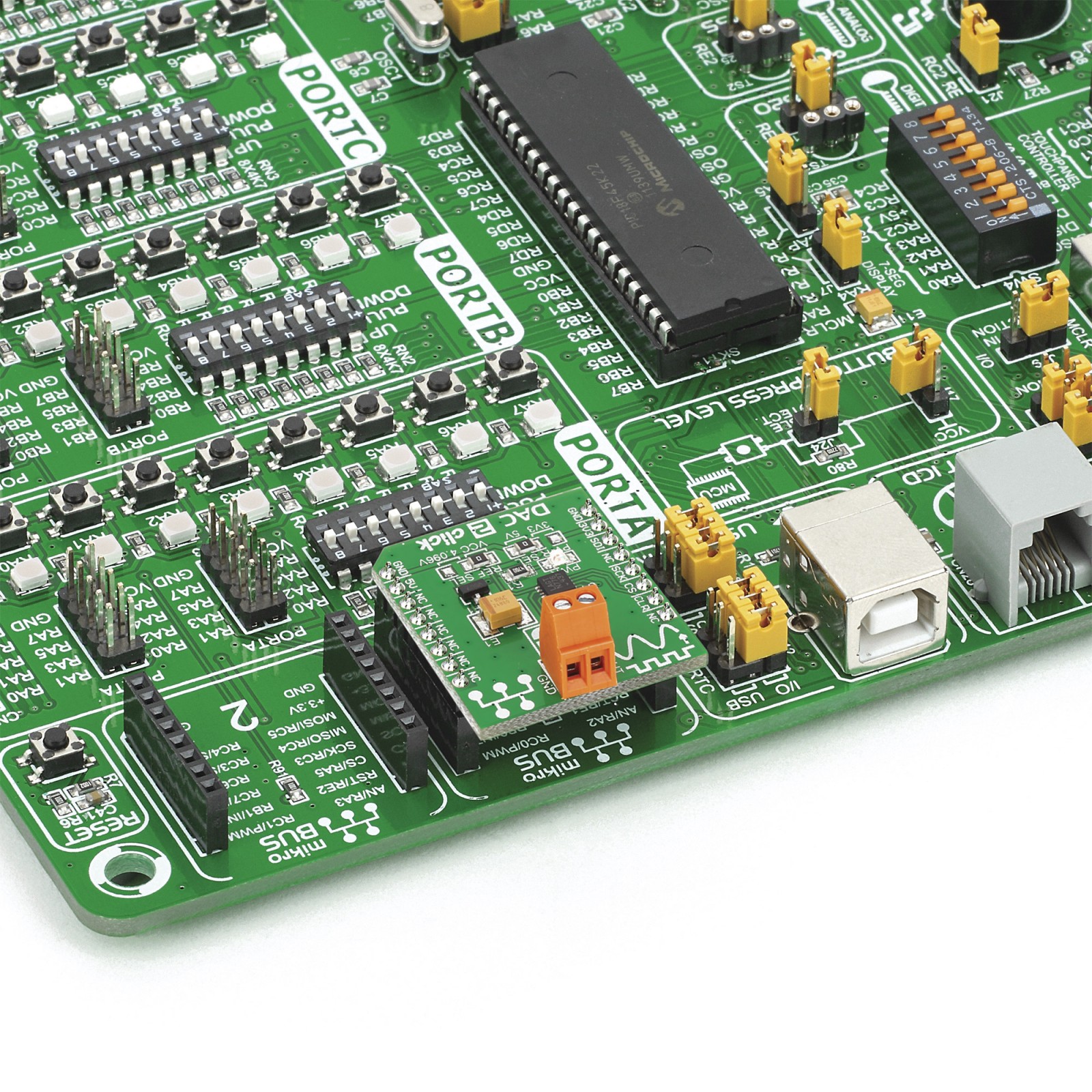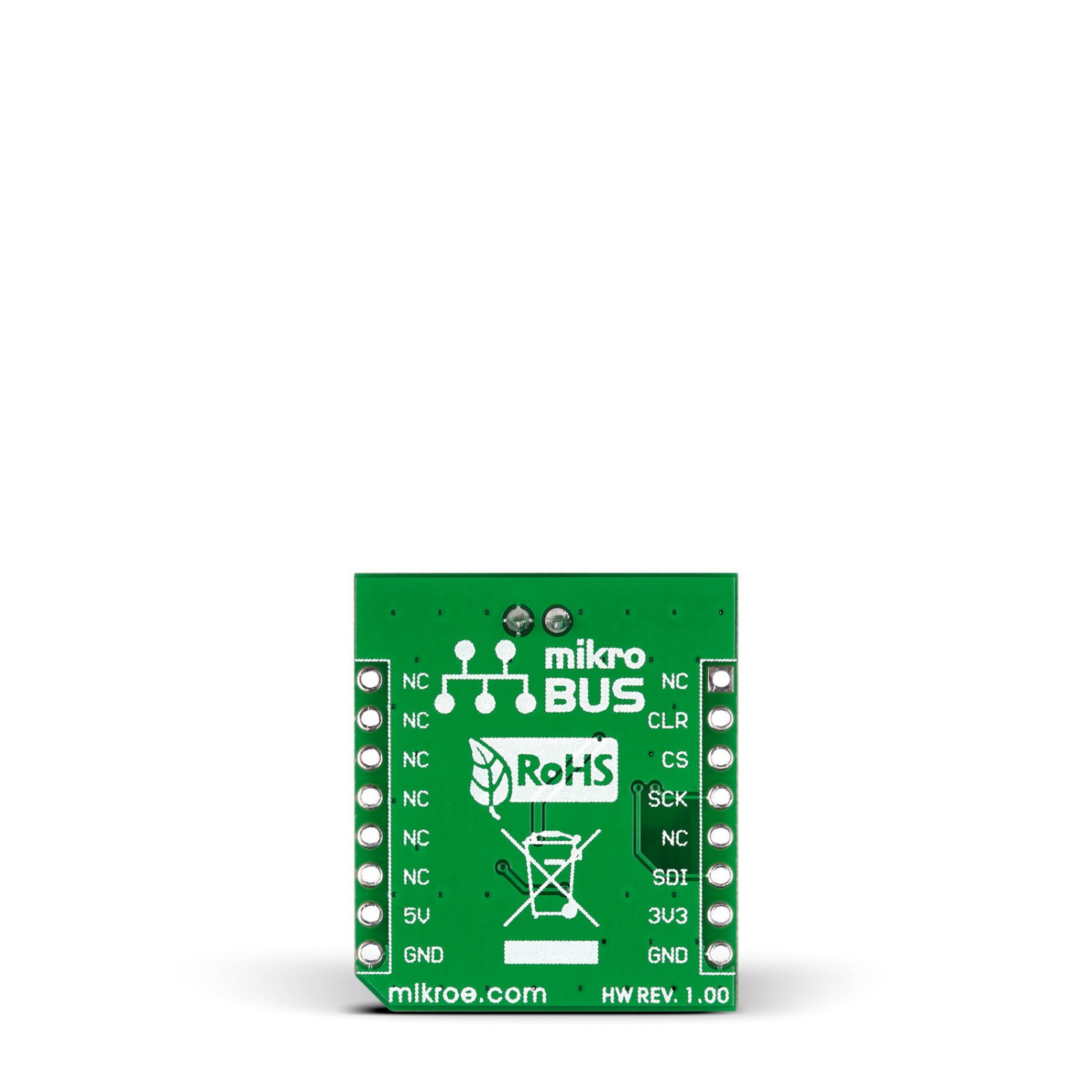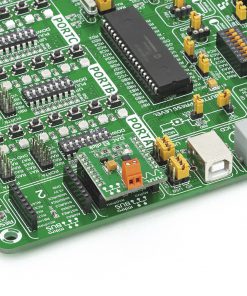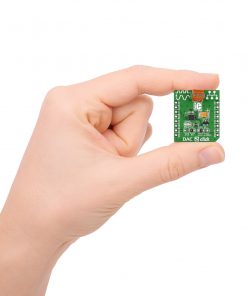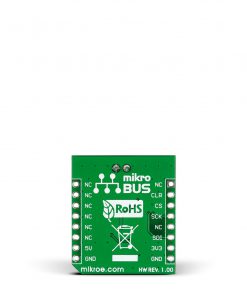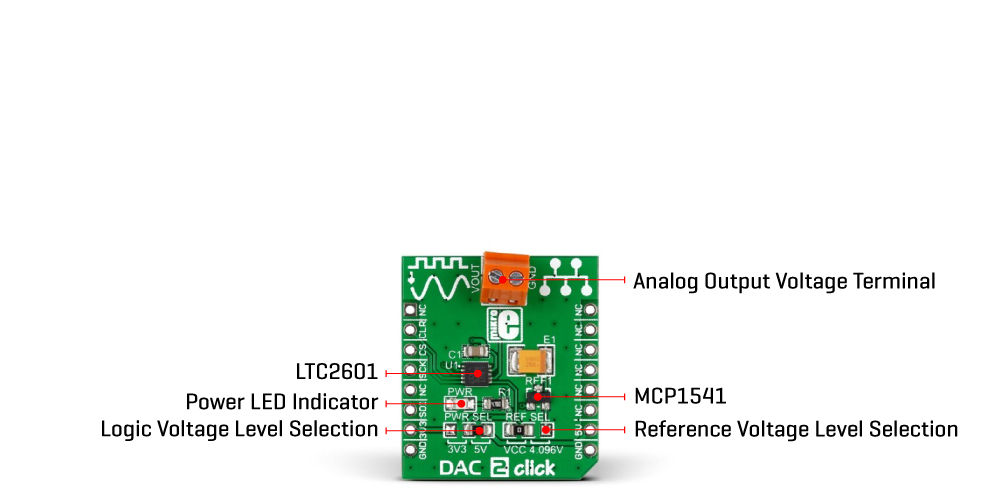DAC 2 Click
R425.00 ex. VAT
DAC 2 Click is a compact add-on board with a fully-featured digital-to-analog converter. This board features the LTC2601, a highly accurate 16-bit voltage-output digital-to-analog converter from Analog Devices. The LTC2601 has high rail-to-rail output drives and double-buffered data latches, communicating with the target MCU through the compatible SPI interface (write-only). Besides an asynchronous clear pin, which is required in many servo and control applications, this board also has the reference voltage selection, selecting the precision of the converter itself. This Click board™ is suitable for offset and gain control applications, process control and industrial automation, programmable reference, and more.
DAC 2 Click is supported by a mikroSDK compliant library, which includes functions that simplify software development. This Click board™ comes as a fully tested product, ready to be used on a system equipped with the mikroBUS™ socket.
Stock: Lead-time applicable.
| 5+ | R403.75 |
| 10+ | R382.50 |
| 15+ | R361.25 |
| 20+ | R347.65 |

